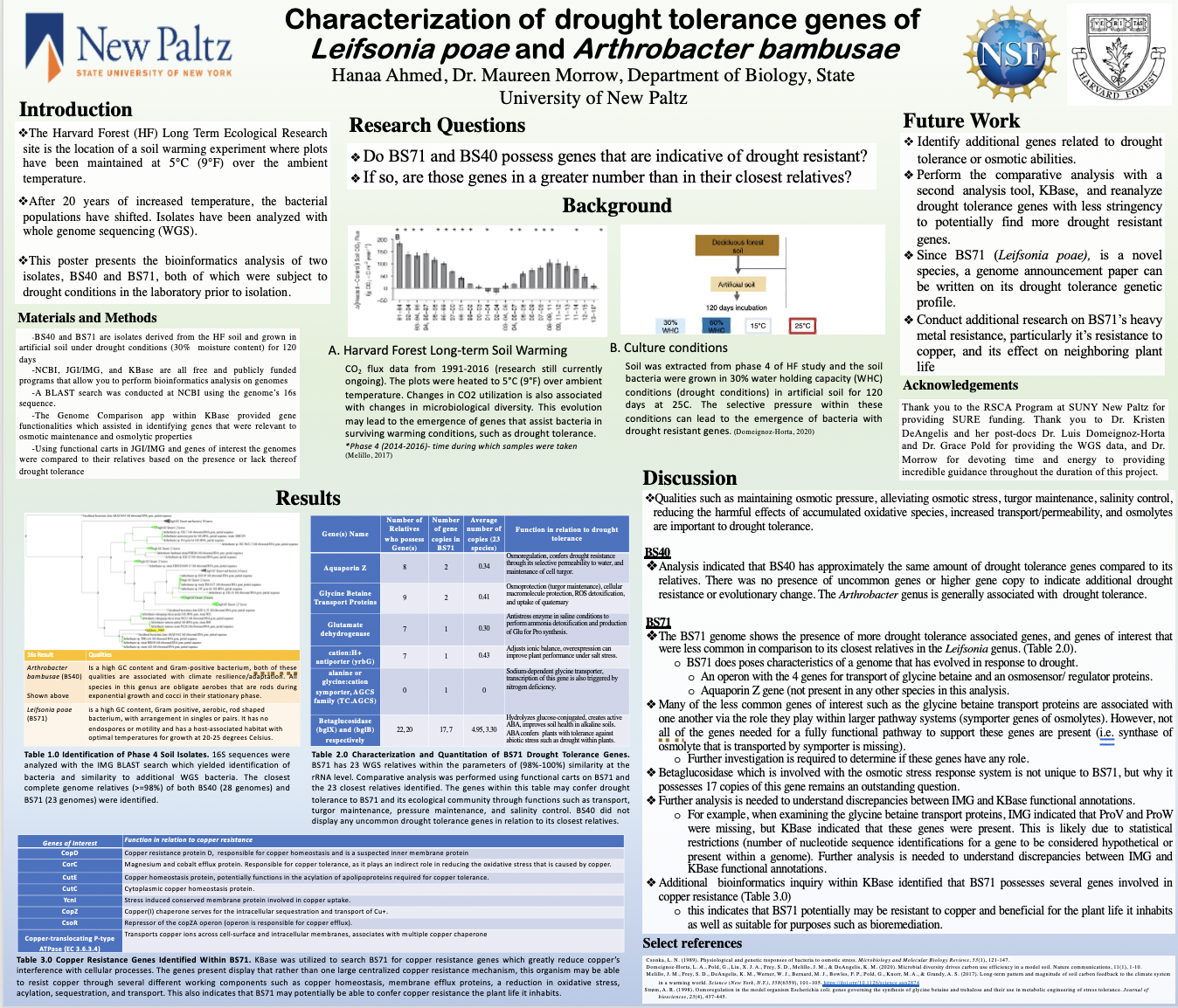Characterization of drought tolerance genes of Leifsonia poae and Arthrobacter bambusae
The Harvard Forest (HF) Long Term Ecological Research site is the location of a soil warming experiment where plots have been maintained at 5°C (9°F) over the ambient temperature since 1991. The warming has created dryer conditions and has altered the bacterial population. The HF derived bacteria, BS40 and BS71, were isolated after laboratory culturing in drought conditions and were subject to whole genome sequencing (WGS). Using NCBI BLAST, the 16s rRNA gene sequences identified BS40 as Arthrobacter bambusae and BS71 as Leifsonia poae. The WGS were analyzed to identify drought tolerance genes and to make comparisons to close relatives (≥98% rRNA similarity) using KBase and the JGI/IMG Genome Portal. Analysis indicated that BS40 does not possess additional drought tolerance genes as compared to its Arthrobacter relatives. However, BS71 contains more drought tolerance associated genes in relation to its closest Leifsonia relatives. These genes include Aquaporin Z and glycine betaine transport proteins, which are involved in water transport and osmolyte formation, respectively. Thus BS71 may represent a drought tolerant species, though additional analysis is required to identify more drought related genes. Additionally, BS71 produces a number of genes associated with both copper resistance and plant growth promotion. Thus, this bacterial isolate will be subject to experimental analysis examine these characteristics and determine if this bacterium might be beneficial to crops.
 CLOSE SIDEBAR
CLOSE SIDEBAR
